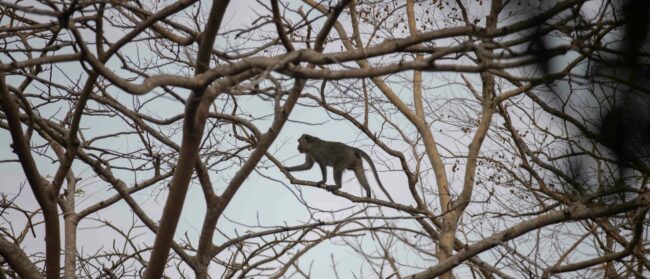Carabao may represent hard work and be known as a ‘Beast of Burden’ to most Filipinos, but some members of the U.S. military have a very different idea of what the national animal of The Philippines symbolises.
To the Military Order of the Carabao, the water buffalo represents the “camaraderie that grows among members of the armed forces who face the dangers and privations of extensive military service far from home.” The social club was founded in 1900 by American enlisted men during the Philippine-American War.
In February 2022, the organisation virtually hosted the 121st Annual Carabao Wallow, which included swearing in the club’s new ‘grand paramount Carabao.’
“The carabao is famous not only for its service to our country and its focus on patriotism and thanking the services, but also humour and having a good time,” said Jon Davis, a retired Lieutenant General of the U.S. Marine Corps, who was sworn in as the next grand paramount carabao during the wallow.
While the water buffalo is colloquially referred to as the national animal of the archipelago, the National Commission for Culture and the Arts (NCCA) of The Philippines said there is no basis for this title in law.
The NCCA dispelled other unofficial declarations of national importance, stating bangus was not in fact the national fish of The Philippines, nor is mango the country’s national fruit.
“Unless a law is passed proclaiming the aforementioned items as our national symbols they will all remain unofficial,” an NCCA post states.
While the carabao has not received the same official recognition as The Philippine Eagle – officially declared the national bird in 1995 – the water buffalo’s significance was signed into law two decades ago by the Philippine Carabao Act of 1992.
The legislation was meant to “propagate and promote” carabao and led to the creation of the Department of Agriculture’s Philippine Carabao Center (PCC).
“We have been familiar with the distinction of the carabao as our national animal for a long time,” said Eric Palacpac, chief of the PCC knowledge management division. “Everyone knows carabaos are one of the symbols of The Philippines, it doesn’t need to be official to be true.”

The latest Carabao Situation Report by the Philippine Statistics Authority registered 2.84 million heads of carabao in the country, the majority of which have been domesticated by small-scale farmers. With a steady population of carabao on farms, Palacpac said the biggest issue is that the country needs more of the buffaloes.
“The traditional role of the water buffalo, or what we call carabao, is as the farmers’ ally in any farm operations,” Palacpac said. “Carabaos have a very significant impact on the social and economic scenario in the countryside.”
Carabao herds in The Philippines declined following World War II, a loss from which the country is still recovering. The PCC has subsequently implemented “genetic improvements” to aid returning populations and bolster the ideal carabao attributes, Palacpac said.
“We upgrade the genetics of native carabaos and produce cross-bred buffaloes that have higher potential for milk and meat production,” Palacpac said. “The focus of our program is to make use of this upgraded carabao.”
Since 1994, more than 5,500 American, Murrah, Brazilian and Italian buffaloes have been imported to The Philippines for the purpose of cross breeding.
To safeguard the genetics of native carabao, the PCC established island sanctuaries across the archipelago. Palacpac said the carabaos at these sanctuaries are likely among the only wild water buffalo populations left in The Philippines.
This article is part of Southeast Asia Globe’s World Wildlife Day Special series.


